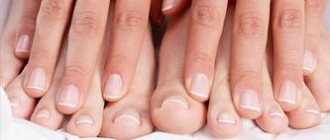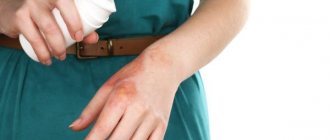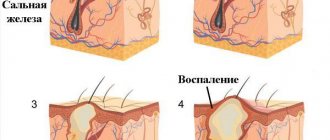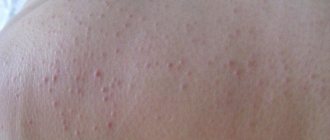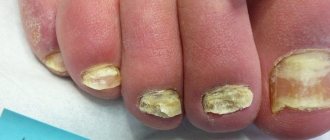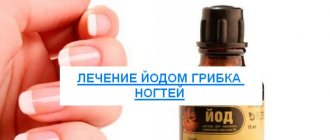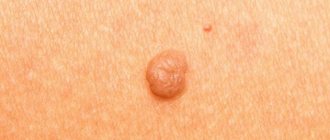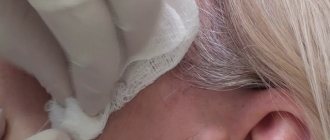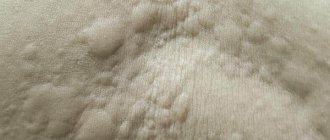Xanthelasma (flat xanthoma of the eyelids) is a slowly progressive disease manifested as focal lipid deposits on the eyelids. Slightly raised yellowish plaques of benign etiology in some cases reach the size of a large pea, sometimes merge to form a solid spot, or move to the bridge of the nose.
The appearance of such a cosmetic defect signals a metabolic disorder and the development of various diseases. It is believed that surgery is the only way to forget about fatty growths on the eyelids forever, however, you can try to remove small xanthomas with folk remedies.
Cosmetic defect or disease
- 7.1 Video - Process of xanthelasma removal (Ablase device)
First of all, it is necessary to find out whether this formation is a cosmetic defect or a skin disease. To do this, you need to analyze why xanthelasma is formed.
What does xanthelasma look like?
By the way. Translated from Greek - a golden or yellow plate, the formation looks appropriately like a yellowish flat plaque or a pea rising above the skin. It may consist of many small xanthomas scattered over the eyelids up to the bridge of the nose, or it may be a continuous spot.
In any form, this is not only a cosmetic problem, but evidence of any malfunctions in the body that can lead or have already led to a certain disease.
Xanthelasmas appeared
In structure, it most closely resembles a lipoma. And the good news is that xanthelasma is not capable of malignancy, that is, it is a priori a benign formation that will not degenerate into malignant under any circumstances. However, it is undoubtedly necessary to treat this disease. But as with any medical problem, a diagnosis must be made first.
Advice. It is necessary to pay attention to xanthoma immediately after its appearance, and if the formation is diagnosed as xanthelasma of the eyelids, treatment must be started immediately, since later it can grow to a large size and become a permanent hindrance, including vision. In addition, a large formation is more difficult to remove without damaging the skin and the likelihood of relapse.
Treatment of xanthelasma of the eyelids
Drug therapy
Xanthelasma is often a sign of a disorder in the body's lipid metabolism, so after its removal it is recommended to follow a special diet aimed at lowering cholesterol levels . If there is a pronounced deviation in the lipid profile, the hypocholesterol diet is supplemented with treatment with cholesterol-lowering lipotropic drugs: Lipamide, Cetamifene, etc.
Treatment with drugs of this pharmacological group, including Litenol, Parmidin, Diosponin, lipoic acid, Clofibrate, is carried out for a long time, until the level of cholesterol in the blood normalizes
Reasons for education
The problem most often affects women (which is perhaps why many assign it cosmetic status) and occurs in elderly female patients.
Important! The exact and only reason for the appearance of xanthelasma has not yet been determined. A number of reasons have been cited, the first of which is a violation of cholesterol metabolism. Then comes atherosclerosis and heredity.
The exact cause of xanthelasma has not yet been determined
Xanthelasma is most likely to form in people who have the following problems.
- Cholesterol imbalance.
- Severe form of atherosclerosis.
- Hereditary disorders of fat metabolism.
- Excess weight, much higher than normal.
- Disease diabetes mellitus.
- Pancreatitis and other related pathologies.
- Cirrhosis and other liver diseases.
- Endocrine pathologies.
- Lipoid nephrosis.
Indications for removing wen on eyelids
By the way. We can talk about heredity as a cause of the disease if it manifests itself in children at an early age.
Xanthelasma of the eyelids - what is it?
Xanthelasmas are formations related to xanthomas - diseases that arise as a result of lipid metabolism disorders. However, unlike xanthomas, xanthelasmas do not become cancerous and do not affect vision. In most cases, this disease does not pose a serious danger, but if it appears, it is worth making an appointment with an ophthalmologist. Sometimes xanthelasmas are one of the signs of some serious pathology.
Plaques form on the upper and lower eyelids. They feel soft to the touch, like blisters. If they are large, they can be felt when blinking. This disease mainly affects the eyelids of women over 40 years of age, since lipid (fat) metabolism disorders often occur at this age.
Clinical picture and diagnostic features
Xanthelasma in the eyelid area
Two types of xanthelasmas - single formations and multiple - have a similar clinical picture and are treated in the same way. To determine the authenticity of the disease, a comprehensive diagnosis will be required. Clinically, it is a small plaque that rises above the skin to varying degrees. It most often forms on the upper eyelids, but can also be located on the lower eyelids or under the eyes.
Important! Xanthelasma does not cause pain, does not harden (has a soft structure), progresses slowly, and does not cause concern until a certain point.
Xanthelasma of the eyelids
More common are symmetrical methods of placement - on both eyelids. It may be fragmentary, or merged into one spot or stripe, having fuzzy, blurry outlines. It appears suddenly, but since it develops slowly and does not indicate itself except for visual changes in the surface of the eyelids, does not cause swelling, does not cause redness, and can remain unnoticed for a long time.
By the way. The maximum recorded size of a single xanthoma is 40 millimeters. It can grow to this state for many years, or it can immediately appear large in size and then practically not increase.
If you or your loved ones have such plaques on the skin of your eyelids, you should act immediately
To carry out diagnostics, after an initial visual examination, the doctor prescribes a blood test for the patient to check for excess lipids. If abnormalities are detected, medications are prescribed to normalize lipid levels. But this will only stop the formation of new xanthelasmas without affecting those that have already appeared. They will have to be removed surgically or by other means.
Surgical removal
- If you find a suspicious new formation on any part of the eyelid or near the eyes that was not there before, you should consult a dermatologist.
- The patient may be asked to see an endocrinologist.
- A referral for a blood test to study the level of lipid and cholesterol metabolism is required.
- Glass can be used to accurately determine the color of the formation.
- To exclude pseudoxanthoma and other similar-looking but malignant tumors, differential diagnosis is necessary.
- Digital dermatoscopy may be prescribed.
- If surgical removal is indicated, an ultrasound scan of the skin is performed first.
Skin ultrasound
Diagnosis and differential diagnosis
If yellow spots appear on the eyelids, the patient should consult a dermatologist, ophthalmologist and endocrinologist. Diagnosing xanthelasma is not difficult: it is enough to examine the plaques, which have a characteristic location and appearance, with the naked eye. Examination using the diascopy method is widely used - pressing on formations with a special glass in order to determine the quality of their blood supply. By questioning and studying the medical history, the doctor finds out the following information:
- about concomitant general diseases, such as, for example, diabetes mellitus or hypertension - perhaps xanthelasma serves as their manifestation;
- about whether this case of the disease is hereditary xanthomatosis.
Laboratory tests include blood tests for cholesterol, glucose, and high-density lipoprotein levels. An endocrinologist may prescribe a thorough study of fat metabolism in the body, but disruption of this process is not a prerequisite for the appearance of cholesterol spots on the eyelids.
It is necessary to be able to distinguish xanthelasma of the eyelid from similar diseases in this area:
- tumor processes of the skin;
- lipoma (fat);
- blister (or dropsy);
- syringoma (sweat gland tumor);
- elastic pseudoxanthoma (hereditary connective tissue disease).
Treatment options
Having established the cause and factors associated with the occurrence of xanthelasma, treatment can begin.
- Medication includes cholesterol-lowering drugs and lipotropic drugs.
- There are several ways to remove xanthelasma through surgery, laser and other means.
- There are many traditional medicine recipes for xanthelasma of the eyelids.
Cholesterol metabolism disorder
Invasive and minimally invasive removal
The best way to get rid of existing xanthelasma is to remove it completely. It is carried out in the following ways:
- excision with a scalpel;
- cryodestruction;
- laser removal;
- radio wave cut;
- electrocoagulation;
- chemical removal.
Surgery to remove xanthelasma
Table. Methods for removing xanthelasma.
| Way | Description |
| Laser removal | The most popular and most expensive method uses a carbon dioxide laser to remove the formation. This method has many advantages, the main ones being high sterility and absolute bloodlessness. In addition, the result is that once a tumor has been removed by laser, it does not recur. The laser installation provides a bactericidal effect and a coagulating effect. The skin is stimulated to regenerate, and postoperative scars do not form on its surface. The entire procedure is painless and has virtually no side effects. Despite this, there are a number of contraindications for laser treatment. Among them are pregnancy, diabetes and the presence of other malignant tumors. |
| Surgical excision | This standard procedure is still used most often, although it has many side effects, requires deep anesthesia and, most importantly, does not exclude the possibility of relapse. To excise a plaque with a scalpel, you need to make incisions in the skin, which is fraught with failure to maintain sterility and subsequent infection. It is also not always possible to remove the formation completely, especially if it is large, in which case it is almost certain that a relapse will occur some time later. In addition, postoperative wound healing takes some time. Surgical treatment is prescribed as a budget option and if the patient has any contraindications to all other methods of xanthelasma removal. |
| Electrocoagulation | When using this removal method, current is applied to the plaques, thus destroying the pathological tissue. Then it is removed using tweezers and cauterized in a special way to prevent relapses. Electrodes are used for cauterization. It also promotes faster healing. A scab forms and falls off on its own after a few days. The operation takes place under local anesthetic and does not last more than a third of an hour. It relieves small xanthelasmas and has a number of contraindications. Surgery is not performed on people who have a herpes infection. It is not used for allergic exacerbations. In case of heart disease, exposure to electric shock is prohibited. It is also not recommended for those who have abnormal blood pressure. |
| Radio wave removal | In this case, removal is carried out using a radio knife. A needle electrode is used to make a skin incision along the edge of the xanthelasma. Then another electrode is taken, which disconnects the damaged tissue from the healthy tissue, removing and removing its layer. Coagulation is carried out using a ball electrode. The operation is performed using local anesthesia. This method cannot be called popular due to its complexity and manipulation. In addition, in the postoperative period, the formation of hematomas was registered in patients. However, the method ensures sterility and practically does not relapse, leaves no scars and is characterized by a short recovery period. |
| Cryodestruction | This modern method of removing xanthelasmas using ultra-low temperatures is only gaining popularity. What stops patients is that small formations are best removed under the influence of liquid nitrogen, at the stage of which people do not yet go to the doctor, waiting until the size of the xanthelasma takes a threatening shape. The procedure is carried out very quickly - in just a few minutes. It is absolutely painless and does not require additional anesthesia, since the nerve endings in the operated area freeze under the influence of nitrogen. |
| Chemical destruction | This method involves treating xanthelasmas with a chemical compound, trichloroacetic acid, which causes cellular coagulation. There is a danger of the composition getting on nearby healthy tissue if applied carelessly. This will cause a chemical burn to healthy skin and cause scarring and the appearance of pigment spots on the affected areas. |
Electrocoagulation
The method of surgical removal should be chosen by the doctor according to indications and in the absence of contraindications to certain effects. If the patient does not wish to undergo any type of surgery, alternative treatment will be offered.
Without surgery
It is at least incorrect to talk about treatment with folk remedies in the case of xanthelasma, since you can only get rid of it surgically. The formation will not disappear from compresses, decoctions and ointments, will not dry out like papilloma and will not even decrease in size, although some local remedies may stop the growth of xanthelasma.
Features of non-surgical treatment
Important! Folk remedies, pharmaceutical ointments, and diet can only correct the state of hyperlipidemia, normalize cholesterol levels and increase the body's resistance, which will prevent the birth of new xanthelasmas.
The use of any traditional methods should be agreed with a doctor and begin only after a full examination, since herbal therapy uses agents that have a choleretic and lipotropic effect. They stimulate the formation of bile and are contraindicated in cases of even slight obstruction of the biliary tract.
Mercury ointment
By the way. Pharmaceutical products - zinc-ichthyol and mercury ointment - are useful for their anti-inflammatory and antiparasitic effects, which reduces the risk of new formations, since they most often occur in the form of lipid deposits where the skin is damaged or inflamed.
Treatment at home
Medicines
Xanthelasma is often removed with a laser, but medications are often used. If the problem arose due to an increase in the amount of cholesterol in the blood, therapy involves normalizing fat metabolism. First of all, treatment is aimed at eliminating the concomitant disease, which is responsible for the appearance of growths on the eyelids. Patients are then prescribed topical medications that target localized fat accumulation. Zinc-ichthyol or hydrocortisone ointment is prescribed. Medicines will need to be applied to the affected areas of the skin and rubbed in with massage movements. You need to use the ointment 2-3 times a day. You can remove xanthelasma at home using this method in 3 weeks.
During therapy, it is important to avoid contact of the product with the mucous membranes of the visual organs.
Treatment with folk remedies
Compresses
Therapy with unconventional methods can be carried out only after consultation with a doctor. You can get rid of xanthelasma with the following folk remedies:
- Honey. You will need to prepare an egg, 1 tablespoon of flour and 1 teaspoon of honey. Prepare the dough from the ingredients and make a small cake out of it. Apply to the affected eyelid and wait 10 minutes. After removing the compress, the visual organs will need to be washed with running water without using soap. Use the product 2 times a day until the xanthoma is completely removed.
- Onion. You need to peel the onion and place it in the oven until it becomes soft. Grind the vegetable using a blender and grate 5 grams of laundry soap, mix the ingredients. Wrap with gauze and apply to the eyelid, avoiding contact with the mucous membrane. Leave for 10 minutes, then rinse with water. Apply a compress twice a day.
- Chestnut. The fruits in the amount of 5 pieces need to be baked in the oven and then chopped. Mix with 1 tablespoon of honey and half a small aloe leaf, which has also been previously crushed. Apply the resulting mixture to the affected area of the eyelids and wait 15 minutes. Rinse off with running water at room temperature.
Return to contents
Effective decoctions
Diet food
With the help of diet it is possible to normalize lipid metabolism. Doctors from Dr. Shilova’s clinic note that it is important for patients to limit animal fats in their diet, replacing them with vegetable ones. You need to stop eating fatty meats. Vegetable, olive and flaxseed oil will also be beneficial. White rice, semolina, sweets and pasta should also be excluded from the menu.
The diet should contain a sufficient amount of vegetables and fruits. Doctors recommend consuming them fresh. This food contains the required microelements and vitamins that improve fat metabolism and the general condition of the body. In addition, you can get useful substances from vitamin-mineral complexes, which are sold in pharmacy chains. It is permissible to take them after consultation with a specialist. The menu should also contain fiber, which is found in cereals and legumes. It is important for the patient to stop drinking alcohol and smoking.
Traditional methods - external
- Mix the protein with flour and honey in equal proportions until smooth. Apply daily to the area occupied by xanthelasma, leaving for a quarter of an hour and rinsing with cool water.
- Prepare a compress from sour cream, honey and fine salt. Also keep it for no more than a quarter of an hour.
Onion
- Apply baked onions mixed with a small amount of pure laundry soap crushed into powder. Can be applied for an hour twice a day.
- Xanthelasma is rubbed with the juice of a freshly cut aloe or Kalanchoe leaf several times a day.
- A paste is prepared from the leaves of the golden mustache, which it is advisable to apply under the bandage throughout the night.
- The formation is cauterized with heated vegetable oil and salt.
- Butter is mixed with watercress juice and applied warm to the surface of the xanthelasma.
Butter
- Raw crushed lard is mixed with garlic in a 2:1 ratio and has a pasty consistency. Apply for a third of an hour and only on the surface of the xanthelasma.
- Rub hot badger fat into the plaque for a quarter of an hour.
How to treat at home
To get rid of golden plaques forever, going under the knife to a specialist who will remove them will not be enough. First of all, you need to determine the cause of their appearance and try to eliminate it. In addition, it should be prevented from occurring in the future. Otherwise, some time after the operation, the tumors will appear again. You can treat it at home, but it is better to consult a doctor before prescribing medications for yourself.
Read why your child has red circles under his eyes here.
Folk remedies
Often, in order to cope with pathology, doctors offer their patients to use folk remedies.
| Ingredients | How to cook | How to use |
| Immortelle leaves – 100 g, rose hips – 100 g, mint leaves – 100 g, water – 3 cups | Pour water over the herbs and put on fire. Let simmer for 1 minute. Leave to infuse for 4 hours | Take the tincture before meals three times a day. You should drink at least 150 ml at a time |
| Cinnamon – 1 tsp | Use once a day | |
| Hellebore – 50 g, hot water – a quarter of a glass | Fill the grass with water. Leave for 12 hours | Drink the resulting composition |
| aloe juice | – | Soak a piece of gauze in it and apply it to the plaque |
| Onion 1 pc., laundry soap - a piece | Bake the onion and then mash. Rub soap. Mix all. | Place on the eyelid and secure. The compress should be applied several times a day |
| Lard – 100 g, grated garlic – 50 g | Mix and then heat for 3 minutes. Then let the products cool. | Apply to the area of the eyelid with defects, cover with a cabbage leaf, then place gauze and secure at the end |
| Birch buds – 20 g, water – 1 glass | Pour boiling water over them and let them brew | Use the composition three times a day, 1 tbsp. spoon |
A symptom of a serious illness or a sign of fatigue is red spots under the eyes.
When medical attention is urgently needed - causes of hemorrhage in the eye.
Without deletion
The goal of therapy is:
- cure of the underlying disease;
- improving the functioning of organs such as the stomach, liver, and pancreas;
- correction of the patient's weight;
- reducing blood cholesterol levels.
To achieve these results, the patient will need to take certain medications, as well as follow a diet.
These methods will not help get rid of the manifestations of existing xanthelasma, but they will prevent their formation in the future.
Quick treatment of allergic conjunctivitis - Cromohexal eye drops.
Medicines
The patient may be prescribed lipotropic medications , as well as those that will reduce cholesterol in the blood:
- lipoic or thioctic acid
- Clofibrate, Pyricarbate or Clofibrate.
Lipotropic medicines of plant origin:
- dog-rose fruit;
- corn silk;
- dandelion root;
- immortelle flowers;
- Birch buds;
- plantain juice.
To treat xanthelasma itself:
- Cyanocobalamin and Choline chloride;
- Ascorbic acid and nicotinic acid;
- Pyridoxine and Calcium pangamate.
Diet features
What you should eat:
- pumpkin or flax seeds;
- lentils and beans;
- fatty fish;
- millet and beans;
- vegetables and fruits;
- Brown rice;
- brown bread;
- nuts;
- peas and buckwheat.
What to eliminate from your diet:
- white flour baked goods and pasta;
- butter;
- semolina porridge;
- White rice;
- fat meat.
Animal oils should be replaced with vegetable oils.
Effective therapy for increased intraocular pressure - instructions for Xalac eye drops.
Antiglaucoma drug No. 1 - instructions for Xalatan eye drops can be found at the link.
Removal
There are several ways to get rid of pathology.
- Surgical excision. The procedure is performed under local anesthesia. Xanthelasma is removed with tweezers and special scissors. The edges of the wound are connected by bringing them together with tweezers. In this case, the edges of the fabric are lubricated with iron sesquichloride.
- Cryodestruction. The specialist applies liquid nitrogen at a temperature of 196 degrees to the pathology. The effect of the procedure is the destruction of benign tumor cells.
- Radio wave method. During the operation, the patient does not experience pain. There is no risk of complications after it. The result is achieved by exposing xanthelasma cells to high frequency waves.
- Laser. The impact is only on the plaque. The positive side of the procedure is that it is painless, safe and bloodless. Its advantages also include the fact that it leaves no scars and there is no postoperative period. Skin defects are removed gently. The surrounding tissues are not affected during the procedure.
- Electrocoagulation. After excision of the plaque, the edges of the affected area are cauterized with an electrode. The crust formed at the junction of the edges disappears a week after the operation. There are practically no traces of it left.
In order for scars after surgery to disappear faster, you should lubricate the affected areas with 5% hydrocortisone ointment.
Traditional methods - oral administration
As an aid to external treatment, decoctions for oral administration can be used simultaneously. The medications recommended for xanthelasma are aimed at correcting general metabolism, cholesterol and fat metabolism. You can also use herbal remedies to ease the work of the liver and stimulate the activity of the pancreas.
- Birch buds, steamed with a glass of boiling water in the amount of 20 g. Take 20 ml three times a day.
Birch buds
- 40 ml of dry yarrow, steamed with a glass of boiling water. When the infusion has cooled and the raw materials have been strained, you need to drink it completely before meals, and do this four times a day for two weeks.
- 25 g of dandelion roots are steamed with a glass of water and drunk in three doses with equal breaks.
- Rose hips in fruits and mint leaves with immortelle leaves in an amount of 10 g are boiled in a glass of water and taken in 150 ml portions four times a day.
- Milk with the addition of oregano is boiled and infused for half a day, then 80 ml is taken three times a day.
Oregano
- It is recommended to eat a teaspoon of cinnamon powder daily in dishes or separately.
Why do xanthelasmas of the eyelids occur?
It is impossible to predict the appearance of xanthelasma. However, there are people who are at risk. Obese people with metabolic problems, diabetics, and patients with pathologies of the liver and pancreas often suffer from this disease. Xanthelasmas can appear on the eyelids with the development of atherosclerosis. They do not cause painful sensations even upon palpation. Formations usually appear on the eyelids of both eyes at once.
Gradually, xanthelasmas grow, but to a certain size. After this, they remain unchanged for some time. If left untreated, the number of plaques increases over the years.
Nutrition
Since fat metabolism is not in order, normalization of nutrition cannot be avoided. This is the only way, and with the help of moderate physical activity, lipids can be brought back to normal. In general, those who want to get rid of the possibility of xanthelasma will have to lead a healthy lifestyle.
- First of all, you will have to give up animal fats, including not consuming too fatty meat, butter and fatty dairy products.
Proper nutrition is very important
- Then you should remove from the diet altogether: pasta, white rice, semolina, white flour and all products made from it.
- Introduce enough fruits and a variety of vegetables into your diet. You can use any cooking method, including frying vegetables in vegetable oil.
- Be sure to eat raw vegetables, herbs and fruits at least once a day.
- Start eating fish, alternating lean varieties with fatty ones. As a side dish, use the same vegetables or porridge made from oats, buckwheat, brown rice and corn grits.
- Don't forget about nuts, flaxseeds, pumpkin seeds, and sesame seeds. They can be sprinkled on porridge and salads.
Sesame seeds
- Legumes and gray bran bread must be present in the diet.
Thus, no one calls for fasting; the diet is quite complete and balanced. But after just a few months of such nutrition, in combination with exercise and in the absence of bad habits, fat metabolism will be restored, and the risk of xanthelasma formation can be forgotten.
Dietary nutrition and lifestyle for xanthelasma
Best materials of the month
- Coronaviruses: COVID-19
- Antibiotics for the prevention and treatment of COVID-19: how effective are they?
- The most common "office" diseases
- Does vodka kill coronavirus?
- How to stay alive on our roads?
Since a common cause of such neoplasms is an imbalance of fat in the body, experts recommend making significant adjustments to your lifestyle and daily diet.
The use of moderate physical activity, long walks in the fresh air, increased physical activity and a healthy diet will normalize metabolic processes, which will be a high-quality prevention of this disease and will help avoid the occurrence of new xanthelasmas.
The dietary program for this disease completely excludes the consumption of foods rich in cholesterol. Butter is prohibited. It is being replaced by vegetable fats. Meat and fish are consumed only of lean varieties.
The basis of a nutritious diet consists of foods rich in fiber, healthy vitamins and minerals. These are fresh fruits and vegetables, lean meats and fish, vegetable oils, as well as fermented milk products. All these products significantly contribute to the removal of harmful cholesterol from the human body.
Fast food, white bread, and flour products, which are already beloved by many, are prohibited. In this case, preference should be given to bran bread. And replace pasta and rice with dishes made from buckwheat, oatmeal or corn. You can also eat peas, beans or lentils.
Drinking regime is also very important. You need to drink up to one and a half liters of pure still water per day, as well as green tea, berry fruit drinks, compotes and juices.
It is necessary to completely eliminate alcohol, sweet carbonated drinks from the diet, and stop smoking. And also pay attention to your health and promptly treat chronic diseases.
Symptoms of the disease
Yellowish formations can occur in different parts of the body and are prone to proliferation.
Xanthomas on the skin appear in the form of growths and plaques without pain. Main manifestations of skin defects:
- location on the face, buttocks, fingers, joints or eyelids;
- no pain;
- slow growth;
- yellow or flesh-colored, eruptive xanthomas may have a red rim around them;
- soft or dense consistency;
- thinning and dry skin at the sites of formations;
- tendency to gradually grow and merge with each other (eruptive xanthomatosis).

